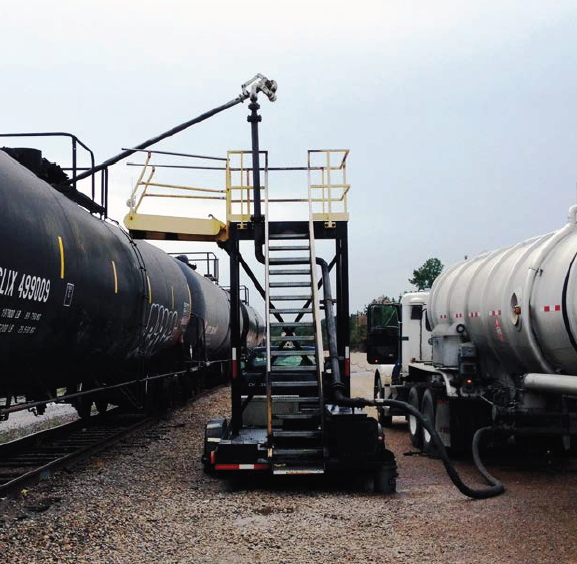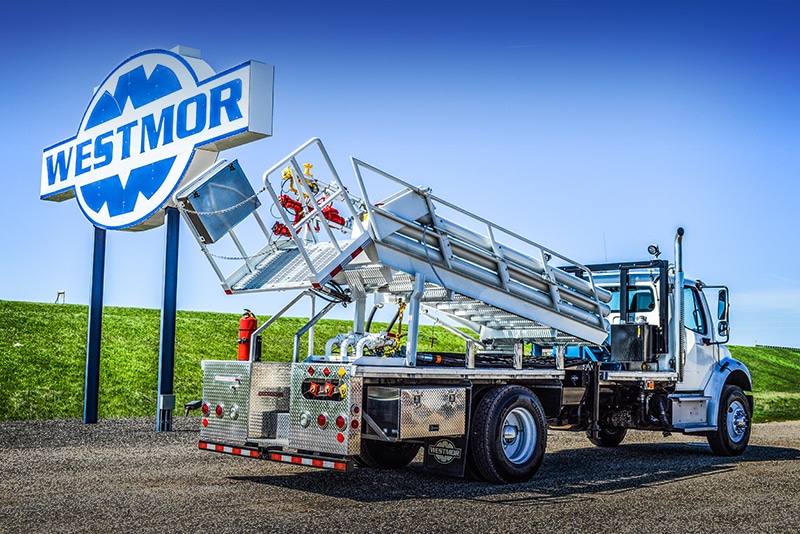

There are many different types of conveyance equipment for transloading facilities. Some utilize simple mechanical force for conveyance, such as conveyor belts. This type of conveyance is particularly useful for items that might be easily broken apart or damaged during unloading. Liquid materials will use pumps attached to gates or valves on the bottom of the railcar. There are many different types of pumps, with different specifications and mechanisms. Explosive liquids, such as acetic acid, formic acid, and formalin, and flammable liquids, such as ethyl ether, acetone, and benzene, require special pumps to prevent static charge, combustion through friction, or sparking hazards. Some liquids as well as plastics and powders require pneumatic conveyance to minimize spillage and dust. Pneumatic conveyance devices help to minimize the materials’ exposure to the open air, preventing contamination or combustion from oxygen in the air, humidity, and other factors. When working with palletized items or when moving entire containers, the facility must have the proper lifting equipment.

For moving pallets, the facility must have forklifts and personnel trained to use them. Moving containers will require cranes that are suitable for the weight of the container, and personnel who can operate them. Many liquid materials require heating before they can be unloaded. This might be a seasonal problem, where the liquid becomes frozen in the tank car, or the liquid may simply require heating to be viscous enough to move. Low pressure steam boilers heat the tankers’ heat transfer coils and bring the liquid to the proper temperature.


 0 kommentar(er)
0 kommentar(er)
